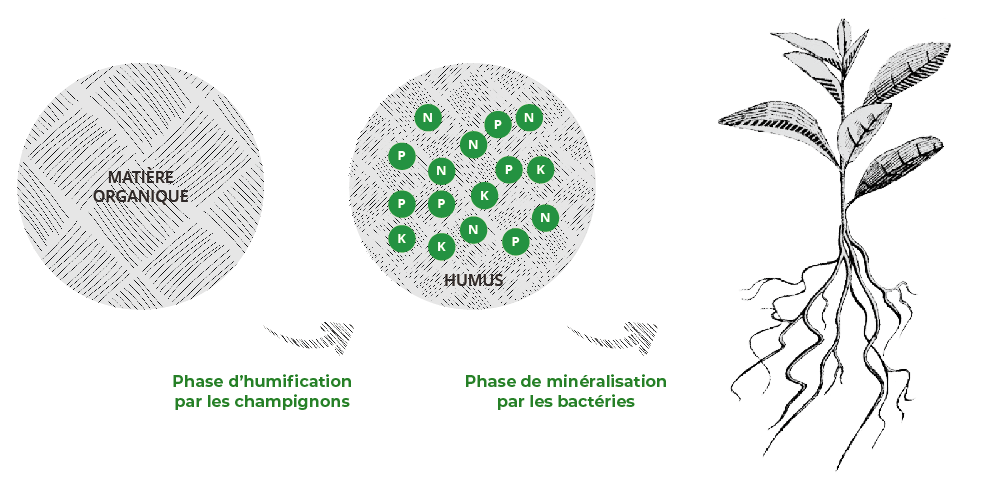Nutrition of plants through organic matter
Fresh organic matter in the soil is transformed into humus by beneficial decomposers.
The work of the epigee fauna is to eat organic matter by reducing it to fecal pellets, that is, extremely small pieces.
It is from this moment that the fungi, which are the big manufacturers of humus and the only organisms capable of attacking lignin, will intervene to transform organic matter into humus. This is the humification phase.
The proportion of humus thus increases with its quantity of nutrients N, P, K, CaO, MgO and trace elements. At the humus stage, organic matter has not yet reached the final stage of its decomposition.
In spring, when the soil will warm up, the bacteria, which are mineralizers, unlike the fungi which are humifying, will attack this humus and release mineral salts such as nitrate, phosphate or potassium, to be able to be directly assimilated by the roots. This is the mineralization phase.

Despite their small size, bacteria are, just after fungi, one of the most active and important decomposers of organic matter on Earth. They are the first to attack organic animal and plant matter thanks to the enzymes they produce.
It is therefore strongly recommended to avoid chloride-based or chemically processed fertilizers to maintain the survival of these microorganisms necessary for the proper functioning of the fertility cycle.
Since humus is made on the surface of the soil, plowing should be avoided as much as possible because it buries organic matter inside the soil, thus preventing it from turning into humus.
The main reason for this is that fungi are aerobic, they need the oxygen in the surrounding air to survive and to make the enzymes for turning organic matter into humus.
Soil fungi disappear because of mineral nitrogen in the fields. Nitrogen favors bacteria, they develop 20 times faster, to the detriment of fungi. This is how in a country like France, in 1900, we made 2 tonnes of straw per hectare to make 4% humus while today we produce 6 tonnes of straw per hectare to make only 2 % humus.
To thrive, fungi need a high C / N ratio. The more nitrogen added, the less fungi there are. It is therefore recommended to compensate for this loss by adding organic matter rich in carbon.

